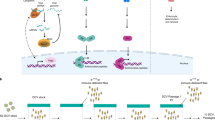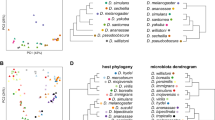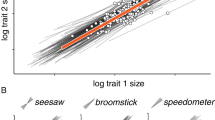Abstract
The availability of complete genome sequence from 12 Drosophila species presents the opportunity to examine how natural selection has affected patterns of gene family evolution and sequence divergence among different components of the innate immune system. We have identified orthologs and paralogs of 245 Drosophila melanogaster immune-related genes in these recently sequenced genomes. Genes encoding effector proteins, and to a lesser extent genes encoding recognition proteins, are much more likely to vary in copy number across species than genes encoding signaling proteins. Furthermore, we can trace the apparent recent origination of several evolutionarily novel immune-related genes and gene families. Using codon-based likelihood methods, we show that immune-system genes, and especially those encoding recognition proteins, evolve under positive darwinian selection. Positively selected sites within recognition proteins cluster in domains involved in recognition of microorganisms, suggesting that molecular interactions between hosts and pathogens may drive adaptive evolution in the Drosophila immune system.
This is a preview of subscription content, access via your institution
Access options
Subscribe to this journal
Receive 12 print issues and online access
$209.00 per year
only $17.42 per issue
Buy this article
- Purchase on Springer Link
- Instant access to full article PDF
Prices may be subject to local taxes which are calculated during checkout




Similar content being viewed by others
References
Hughes, A.L. & Nei, M. Pattern of nucleotide substitution at major histocompatibility complex class I loci reveals overdominant selection. Nature 335, 167–170 (1988).
Schlenke, T.A. & Begun, D.J. Natural selection drives Drosophila immune system evolution. Genetics 164, 1471–1480 (2003).
Drosophila 12 Genomes Consortium. Evolution of genes and genomes on the Drosophila phylogeny. Nature doi:10.1038/06341 (published online 8 November 2007).
Lemaitre, B. & Hoffmann, J. The host defense of Drosophila melanogaster. Annu. Rev. Immunol. 25, 697–743 (2007).
Meister, M. & Lagueux, M. Drosophila blood cells. Cell. Microbiol. 5, 573–580 (2003).
Steiner, H. Peptidoglycan recognition proteins: on and off switches for innate immunity. Immunol. Rev. 198, 83–96 (2004).
Hultmark, D. Drosophila immunity: paths and patterns. Curr. Opin. Immunol. 15, 12–19 (2003).
De Gregorio, E., Spellman, P.T., Tzou, P., Rubin, G.M. & Lemaitre, B. The Toll and Imd pathways are the major regulators of the immune response in Drosophila. EMBO J. 21, 2568–2579 (2002).
Boutros, M., Agaisse, H. & Perrimon, N. Sequential activation of signaling pathways during innate immune responses in Drosophila. Dev. Cell 3, 711–722 (2002).
Agaisse, H. & Perrimon, N. The roles of JAK/STAT signaling in Drosophila immune responses. Immunol. Rev. 198, 72–82 (2004).
Silverman, N. & Maniatis, T. NF-kappaB signaling pathways in mammalian and insect innate immunity. Genes Dev. 15, 2321–2342 (2001).
Evans, C.J., Hartenstein, V. & Banerjee, U. Thicker than blood: conserved mechanisms in Drosophila and vertebrate hematopoiesis. Dev. Cell 5, 673–690 (2003).
Christophides, G.K. et al. Immunity-related genes and gene families in Anopheles gambiae. Science 298, 159–165 (2002).
Evans, J.D. et al. Immune pathways and defence mechanisms in honey bees Apis mellifera. Insect Mol. Biol. 15, 645–656 (2006).
Waterhouse, R.M. et al. Evolutionary dynamics of immune-related genes and pathways in disease-vector mosquitoes. Science 316, 1738–1743 (2007).
Markow, T.A. & O'Grady, P.M. Drosophila biology in the genomic age. Genetics doi:10.1534/genetics.107.074112 (in the press).
Hahn, M.W., De Bie, T., Stajich, J.E., Nguyen, C. & Cristianini, N. Estimating the tempo and mode of gene family evolution from comparative genomic data. Genome Res. 15, 1153–1160 (2005).
Hultmark, D. Immune reactions in Drosophila and other insects: a model for innate immunity. Trends Genet. 9, 178–183 (1993).
Clark, A.G. & Wang, L. Molecular population genetics of Drosophila immune system genes. Genetics 147, 713–724 (1997).
Ramos-Onsins, S. & Aguade, M. Molecular evolution of the Cecropin multigene family in Drosophila. functional genes vs. pseudogenes. Genetics 150, 157–171 (1998).
Kocks, C. et al. Eater, a transmembrane protein mediating phagocytosis of bacterial pathogens in Drosophila. Cell 123, 335–346 (2005).
Kurucz, E. et al. Nimrod, a putative phagocytosis receptor with EGF repeats in Drosophila plasmatocytes. Curr. Biol. 17, 649–654 (2007)
Kurucz, E. et al. Hemese, a hemocyte-specific transmembrane protein, affects the cellular immune response in Drosophila. Proc. Natl. Acad. Sci. USA 100, 2622–2627 (2003).
Ramet, M. et al. Drosophila scavenger receptor CI is a pattern recognition receptor for bacteria. Immunity 15, 1027–1038 (2001).
Long, M., Betran, E., Thornton, K. & Wang, W. The origin of new genes: glimpses from the young and old. Nat. Rev. Genet. 4, 865–875 (2003).
Jiggins, F.M. & Kim, K.W. The evolution of antifungal peptides in Drosophila. Genetics 171, 1847–1859 (2005).
Daibo, S., Kimura, M.T. & Goto, S.G. Upregulation of genes belonging to the drosomycin family in diapausing adults of Drosophila triauraria. Gene 278, 177–184 (2001).
Hotopp, J.C. et al. Widespread lateral gene transfer from intracellular bacteria to multicellular eukaryotes. Science 317, 1753–1756 (2007).
Bulet, P., Hetru, C., Dimarcq, J.L. & Hoffmann, D. Antimicrobial peptides in insects; structure and function. Dev. Comp. Immunol. 23, 329–344 (1999).
Yang, Z. PAML: a program package for phylogenetic analysis by maximum likelihood. Comput. Appl. Biosci. 13, 555–556 (1997).
Yang, Z., Nielsen, R., Goldman, N. & Pedersen, A.M. Codon-substitution models for heterogeneous selection pressure at amino acid sites. Genetics 155, 431–449 (2000).
Storey, J.D. & Tibshirani, R. Statistical significance for genomewide studies. Proc. Natl. Acad. Sci. USA 100, 9440–9445 (2003).
Stroschein-Stevenson, S.L., Foley, E., O'Farrell, P.H. & Johnson, A.D. Identification of Drosophila gene products required for phagocytosis of Candida albicans. PLoS Biol. 4, e4 (2006).
Philips, J.A., Rubin, E.J. & Perrimon, N. Drosophila RNAi screen reveals CD36 family member required for mycobacterial infection. Science 309, 1251–1253 (2005).
Blandin, S. & Levashina, E.A. Thioester-containing proteins and insect immunity. Mol. Immunol. 40, 903–908 (2004).
Chang, C.I. et al. Structure of the ectodomain of Drosophila peptidoglycan-recognition protein LCa suggests a molecular mechanism for pattern recognition. Proc. Natl. Acad. Sci. USA 102, 10279–10284 (2005).
Chang, C.I., Chelliah, Y., Borek, D., Mengin-Lecreulx, D. & Deisenhofer, J. Structure of tracheal cytotoxin in complex with a heterodimeric pattern-recognition receptor. Science 311, 1761–1764 (2006).
Yang, Z., Wong, W.S. & Nielsen, R. Bayes empirical bayes inference of amino acid sites under positive selection. Mol. Biol. Evol. 22, 1107–1118 (2005).
Werner, T., Borge-Renberg, K., Mellroth, P., Steiner, H. & Hultmark, D. Functional diversity of the Drosophila PGRP-LC gene cluster in the response to lipopolysaccharide and peptidoglycan. J. Biol. Chem. 278, 26319–26322 (2003).
Begun, D.J. & Whitley, P. Adaptive evolution of relish, a Drosophila NF-kappaB/IkappaB protein. Genetics 154, 1231–1238 (2000).
Yang, Z. Likelihood ratio tests for detecting positive selection and application to primate lysozyme evolution. Mol. Biol. Evol. 15, 568–573 (1998).
Zhang, J., Nielsen, R. & Yang, Z. Evaluation of an improved branch-site likelihood method for detecting positive selection at the molecular level. Mol. Biol. Evol. 22, 2472–2479 (2005).
Levine, M.T. & Begun, D.J. Comparative population genetics of the immunity gene, Relish: is adaptive evolution idiosyncratic? PLoS ONE 2, e442 (2007).
Stoven, S. et al. Caspase-mediated processing of the Drosophila NF-kappaB factor Relish. Proc. Natl. Acad. Sci. USA 100, 5991–5996 (2003).
Little, T.J. & Cobbe, N. The evolution of immune-related genes from disease carrying mosquitoes: diversity in a peptidoglycan- and a thioester-recognizing protein. Insect Mol. Biol. 14, 599–605 (2005).
Little, T.J., Colbourne, J.K. & Crease, T.J. Molecular evolution of daphnia immunity genes: polymorphism in a gram-negative binding protein gene and an alpha-2-macroglobulin gene. J. Mol. Evol. 59, 498–506 (2004).
Bulmer, M.S. & Crozier, R.H. Variation in positive selection in termite GNBPs and Relish. Mol. Biol. Evol. 23, 317–326 (2006).
Lazzaro, B.P. & Clark, A.G. Molecular population genetics of inducible antibacterial peptide genes in Drosophila melanogaster. Mol. Biol. Evol. 20, 914–923 (2003).
Tennessen, J.A. Molecular evolution of animal antimicrobial peptides: widespread moderate positive selection. J. Evol. Biol. 18, 1387–1394 (2005).
De Bie, T., Cristianini, N., Demuth, J.P. & Hahn, M.W. CAFE: a computational tool for the study of gene family evolution. Bioinformatics 22, 1269–1271 (2006).
Acknowledgements
This work was supported by the National Institutes of Health (A.G.C. and B.P.L.); the National Sciences Foundation (B.P.L.); and the Swedish Foundation for Strategic Research, the Wallenberg Consortium North and the Swedish Research Council (D.H.). T.B.S. is a Howard Hughes Predoctoral Fellow.
Author information
Authors and Affiliations
Contributions
T.B.S. and A.G.C. designed this study; T.B.S., B.P.L., T.A.S., J.D.E., D.H., and A.G.C. generated the data and analyzed the results; T.B.S. wrote this paper; B.P.L., T.A.S., J.D.E., D.H., and A.G.C. contributed to the writing and editing of this paper.
Corresponding author
Rights and permissions
About this article
Cite this article
Sackton, T., Lazzaro, B., Schlenke, T. et al. Dynamic evolution of the innate immune system in Drosophila. Nat Genet 39, 1461–1468 (2007). https://doi.org/10.1038/ng.2007.60
Received:
Accepted:
Published:
Issue Date:
DOI: https://doi.org/10.1038/ng.2007.60
This article is cited by
-
Balancing selection on the complement system of a wild rodent
BMC Ecology and Evolution (2023)
-
Innate immune pathways act synergistically to constrain RNA virus evolution in Drosophila melanogaster
Nature Ecology & Evolution (2022)
-
Chromosome-level genome assembly of Bactrocera dorsalis reveals its adaptation and invasion mechanisms
Communications Biology (2022)
-
Evolution of Toll, Spatzle and MyD88 in insects: the problem of the Diptera bias
BMC Genomics (2021)
-
Antimicrobial Peptides as Potential Therapeutic Agents: A Review
International Journal of Peptide Research and Therapeutics (2021)



